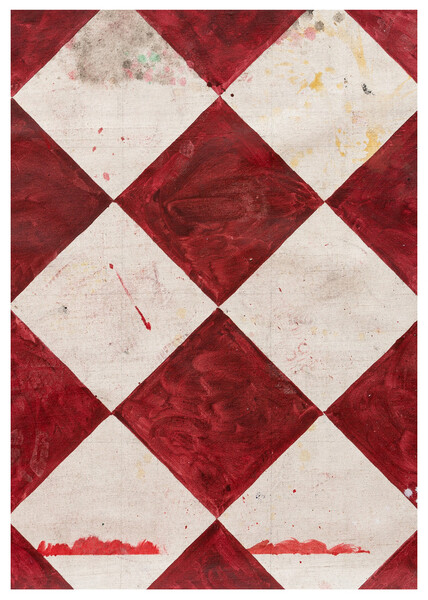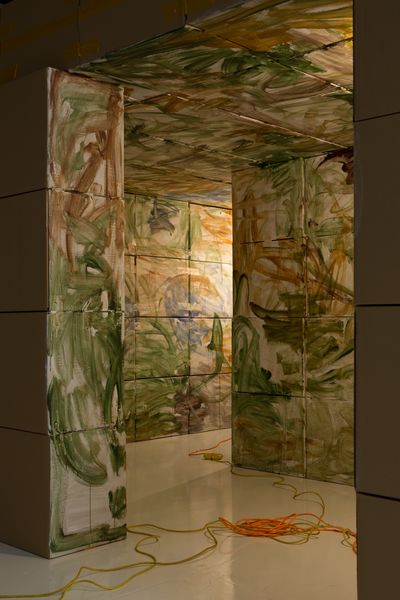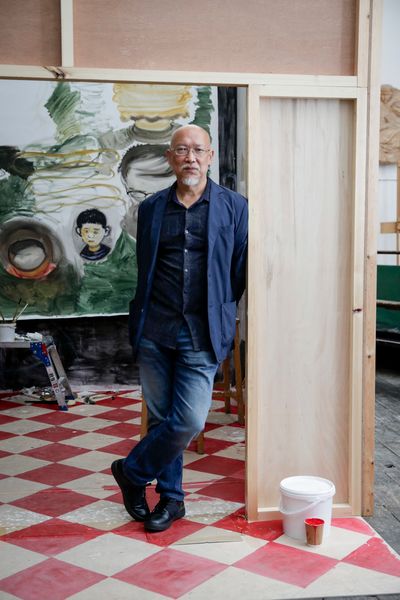Zhang Enli: Shanghai Memories
Zhang Enli’s work is in dialogue with the light and layered qualities of traditional Chinese brush painting, and at the same time incorporates urban and domestic objects drawn from components of modern life. Integral to his thought processes are memories of Shanghai in the 1990s and the material wealth and cultural revolution specific to this time.
His early paintings explore figurative and still life compositions, where bodies are depicted smoking, eating and interacting. Recognizing the importance of the city he calls home, the artist remembers ‘changes in urban life, changes in our personal life, and also in material culture’, and how ‘that kind of expression has become more important for me today’.
‘Objects are full of and precipitate many stories.’ —Zhang Enli
In recent years, Zhang Enli has developed his own abstract visual language, with a focus on artistic gesture and spatial relations. Working from sketches, photographs, and memories to render his experience, the forms and surfaces of everyday objects are a source of inspiration for the artist.
Zhang Enli elaborates, ‘objects are full of and precipitate many stories. With a person—even if he doesn’t tell you—the objects around him will tell you what kind of a person he is.’ These reflections are emblematic of Zhang Enli’s wider approach to the subject matter and form of his works, which carry within them a sense of history, memory and fluidity.

Zhang Enli, Meat Market (2), 1997. Tate Collection © Zhang Enli

Zhang Enli, Untitled (Tiles) (detail), 2018 © Zhang Enli
This month, Zhang Enli will present three of his most recent works at Chi K11 art museum, Shanghai, alongside Colombian artist Oscar Murillo. The exhibition will establish a dialogue between the two artists and explore the conceptual affinities in their expansive oeuvres.
Filling the space will be a new work in Zhang Enli’s Space Painting series, in which the artist applies gouache directly to the walls of the museum, to create an immersive and nostalgic environment.

Zhang Enli, Space Painting, 2014 © Zhang Enli

Zhang Enli, Space Painting, 2014 © Zhang Enli
Zhang Enli began creating his Space Painting installations in 2007. Ranging from abstract to figurative, these expansive works consider the sensitive textures of interiors, and how space can be synonymously psychological, architectural and painterly. On the source of inspiration for his Space Paintings, the artist said, ‘I suppose it comes from when I first moved house.
I saw a mark on the floor, which had been made by furniture, which had been sitting there. After all the furniture had been moved out, I saw marks of where things used to be. It signalled the passing of time for me.’ He elaborates that ‘using this material makes for a more immersive experience for the viewer—when they enter the space the painting is all around them and underneath them, rather than just one surface in front of them, which is what a painting on a canvas is. Painting on a wall also feels more wild, in a way.’

Zhang Enli at the Royal Academy

Installation view, 'Studio’, Royal Academy, London, 2018 © Zhang Enli
Based on Zhang Enli’s 1990s Shanghai studio, ‘Studio’ (2018) is a working space the artist first constructed during his month-long residency at The Royal Academy of Arts, London, as part of an artist-in-residence programme co-presented by K11 Art Foundation and the Royal Academy. From the outside, a wooden, shell-like exterior creates a sense of concealment and mystery.
Zhang Enli invites the viewer to enter and leave traces to become an integral part of the work. ‘Untitled (Tiles)’ (2018) is a new series of checkerboard paintings, installed on the ground to resemble tiles commonly used for flooring in 1920s and 1930s Shanghai, while also evoking the surrealist imagery of the circus. Zhang Enli said of this practice ‘it’s about extracting a specific moment from my memory and putting that on display’.
This enthusiasm for the present, fleeting moment poses a question to the increasing value of material culture, as he says ‘there are too many things in the world to be kept.’
Related News
1 / 5




